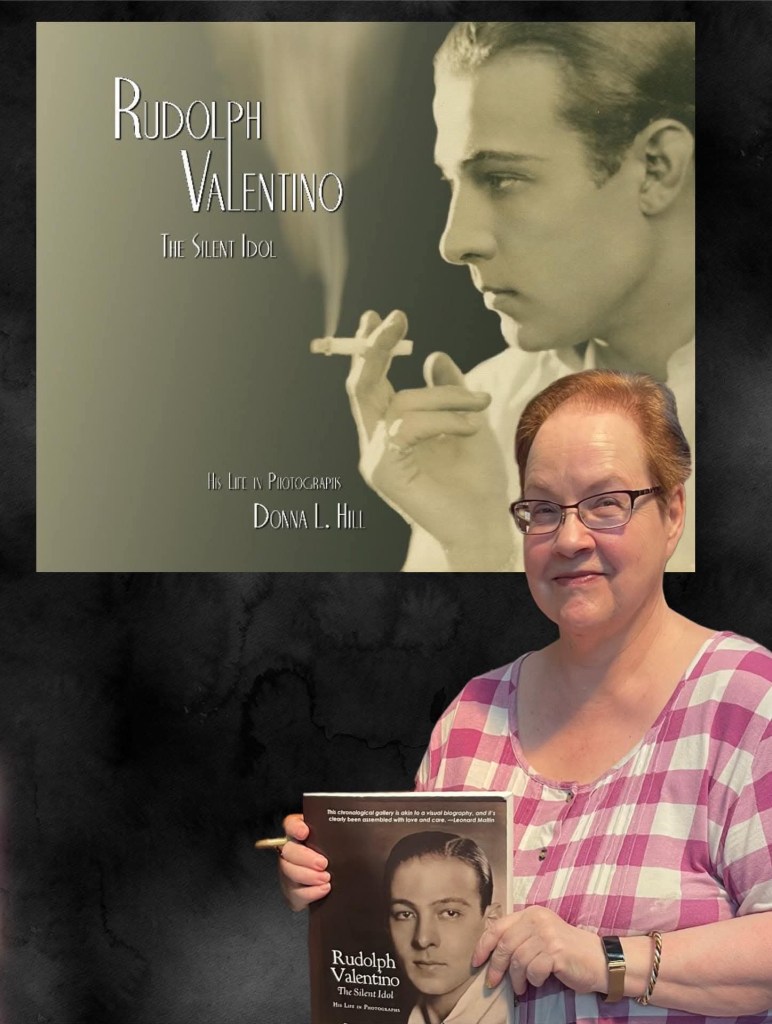 Donna Hill was a Rudolph Valentino expert whose book, “Rudolph Valentino: The Silent Idol, His Life in Photographs” was published in 2019 and features many photos from her personal collection. / Facebook
Donna Hill was a Rudolph Valentino expert whose book, “Rudolph Valentino: The Silent Idol, His Life in Photographs” was published in 2019 and features many photos from her personal collection. / Facebook
Last month, as I was rummaging in the basement for the last of my Halloween decorations, I came across my popover pan. Finding cookware among the bats and spiderwebs isn’t unlikely for me. My basement, like most of my house, is a bit of a jumble.
The popover pan reminded me of my friend Donna Hill of San Francisco, who mailed it to me years ago. I had posted a popover recipe on my blog, and Donna noticed that I made the popovers in muffin pans. She immediately sent me her popover pan, which she said she didn’t need.
Looking at the pan, I realized I hadn’t been in touch with Donna for a while. As soon as I finalized my Halloween décor, I opened the computer and logged into Facebook to send her a message … and got a shock. It turned out that she had died in her sleep last December.
I can’t exactly recall when Donna came into my life. I think we “met” around 2010. I put “met” in quotation marks because we never actually came together in person. We were online friends, drawn to each other by our common love of old movies, cooking and pets — and by Donna’s generous spirit.
My field of cinema study is films from the 1930s and ’40s (with a few from the ’50s thrown in). Donna specialized in silent cinema, although I can’t imagine there was much about any era of film history she didn’t know.
She was an expert on Rudolph Valentino (1895-1926), the “Latin lover” who was one of Hollywood’s biggest stars in the 1920s.
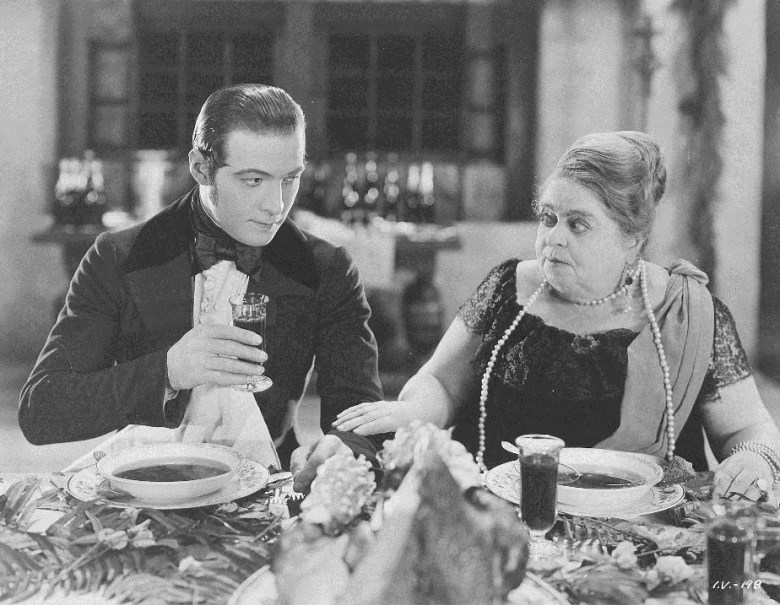 Rudolph Valentino, left, dining in the 1925 film, “The Eagle.” / Courtesy of Donna Hill
Rudolph Valentino, left, dining in the 1925 film, “The Eagle.” / Courtesy of Donna Hill
Valentino was born in 1895, the same year in which the Lumière brothers first showed films to the public. He is one of the few silent-film stars who is still remembered and recognized by much of the American public.
He came to the United States at the age of 18 and began his career as a dancer.
His dancing skills would help establish his stardom in his breakthrough film, “The Four Horsemen of the Apocalypse” (1921). The dance scene in “Four Horsemen” started a national craze for the tango. It is still breathtaking to watch.
Valentino made several hugely successful films before dying of a perforated ulcer in 1926.
Donna became a lifelong film fan when she was 10 years old, she told me. She saw her first Valentino film, “Blood and Sand,” on her local PBS station shortly after that.
She bought her first Valentino photograph in the mid-1970s when she was a teenager. She eventually came to own hundreds of photographs of the star. She told me she hadn’t counted but thought the collection numbered between 700 and 1,000.
Donna had a day job in a law office and was technically an amateur historian. People often use the word “amateur” pejoratively. In fact, it has its roots in the Latin word for love: amateurs do their work out of passion. Surely that should be the reason for all of our work.
Donna drew on her collection of photographs and her extensive research on Valentino for her book “Rudolph Valentino: The Silent Idol.” I treasure my copy of this book.
At the time of her death, she was working on a book about Dorothy Gish, the less well known but equally talented sister of silent-film icon Lillian Gish.
I loved reading Donna’s essays about silent films and about her visits to film festivals around the world. She was admired and respected by film historians, who praised her generosity, her insight, her wit and her enthusiasm.
She taught me a lot, and not just about the movies. For example, she introduced me to ofrendas. These are little shrines to those we have lost, historically put up for the Day of the Dead, just after Halloween.
Donna and her late companion Dian created elaborate, colorful ofrendas to honor the memory of people they had lost. Their ofrendas featured flowers, candles, trinkets, foods the departed had loved and skulls made of sugar and chocolate.
I gather that the idea behind ofrendas is that if loved ones revisit us on the Day of the Dead, they will be cheered to know that we remember them and their taste.
In retrospect, I realize I should have made an ofrenda for Donna this year. I consider this article my ofrenda, honoring my friend and her taste in food, film and pets.
Donna supported me valiantly when my mother died in 2011, and she participated enthusiastically in my adoption and naming of my current animal companions, Rhubarb the cat and Cocoa Chanel the dog.
She had two cats while I knew her. Not unlike my late cat Lorelei Lee, Donna’s Tango was full of personality, some of it acerbic on occasion. When Tango passed away, Donna adopted William H. Powell, a playful little guy.
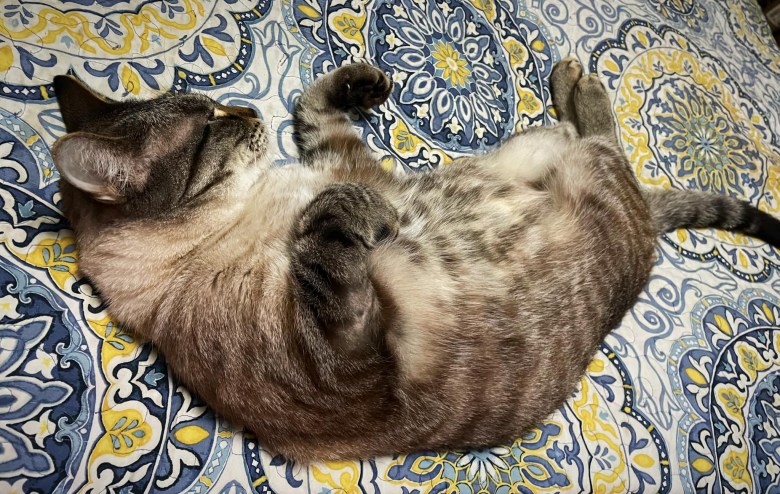 Donna Hill’s cat, William H. Powell. / Courtesy of Donna Hill
Donna Hill’s cat, William H. Powell. / Courtesy of Donna Hill
One of my first concerns when I heard she had died was for the cat. Fortunately, I have learned that William was adopted by a friend and neighbor in Donna’s apartment building.
Donna cooked all the time. She gave me a couple of film-related recipes for my most recent cookbook, “Pot Luck: Random Acts of Cooking.” The one I have chosen to include here is (of course!) associated with Valentino.
Donna told me that Valentino loved seafood, having grown up in Puglia, a coastal region of Italy, located on the “heel of the boot.”
“When times were lean, he went to the beach for shellfish,” she informed me. “He also hunted small game to feed his family when he was young.
“His mother was French so he adored French as well as Italian food. And he loved preparing pasta for his friends. One special meal some of them remembered was a spicy dish of 6-foot-long pasta with garlic, hot pepper and olive oil.”
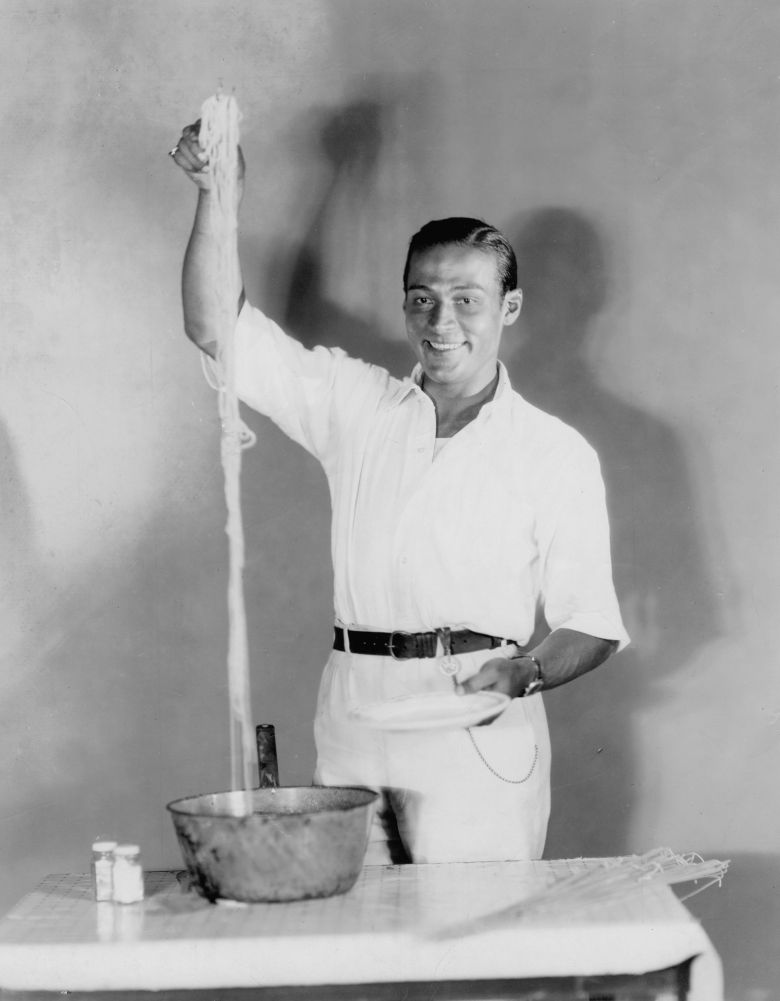 Rudolph Valentino with 6-foot-long pasta. / Courtesy of Donna Hill
Rudolph Valentino with 6-foot-long pasta. / Courtesy of Donna Hill
Donna sent me a version of the pasta recipe, which had been making the rounds of Valentino fans for years. She wasn’t 100% certain it was authentic, but its use of fish (anchovies) seems right up Valentino’s alley. As usual, I adapted it slightly.
I was unable to find 6-foot-long spaghetti, but even without it the recipe is delicious. Be sure to watch a Valentino movie while noshing. I suggest “The Sheik” (1921). You will swoon into your spaghetti.
Rudolph Valentino’s Secret Spaghetti Sauce
Ingredients:
2 tablespoons olive oil, divided
1 large onion, diced
1 1/2 cups sliced mushrooms
1 can (8 ounces) tomato sauce
1 can (8 ounces) tomato paste
1 can (16 ounces) whole tomatoes, chopped and undrained
(Note: it’s hard to find a 16-ounce can these days; either use a slightly smaller can or measure 16 ounces out of a larger can.)
1 pound Italian sausage (I used half sweet and half hot), cut into bite-sized pieces
1 teaspoon minced garlic (feel free to add more)
1 tablespoon fresh oregano
1 tablespoon fresh rosemary
1/2 cup red wine, plus more if needed
1 can (2 ounces) anchovies, drained
Instructions:
Heat 1 tablespoon of the oil in a Dutch oven and sauté the onion and mushroom pieces over low heat until they soften, adding a little water if needed. Add the tomato sauce, the tomato paste, and the whole tomatoes. Continue to cook over low heat, partially covered.
In a separate skillet sauté the sausage pieces, adding the second tablespoon of oil if they start to stick. Add the garlic pieces as the sausage cooks. When the sausage has browned, scoop the pieces of sausage and garlic up and pop them into the Dutch oven. Stir in the oregano and rosemary as well.
Deglaze the skillet with the red wine, and add the wine and any pieces of sausage that are in it to the Dutch oven. Stir in half of the anchovies.
Simmer the sauce for 10 minutes, partially covered, and taste. Add more anchovies as needed. (I just threw them all in.) Cook for 30 minutes more, stirring occasionally. Cover the pot and/or add a little more wine if the sauce starts to get too thick.
Serve with spaghetti and grated cheese. Serves 4.
Tinky Weisblat is an award-winning food writer and singer known as the Diva of Deliciousness. Visit her website, TinkyCooks.com.
What to Read Next

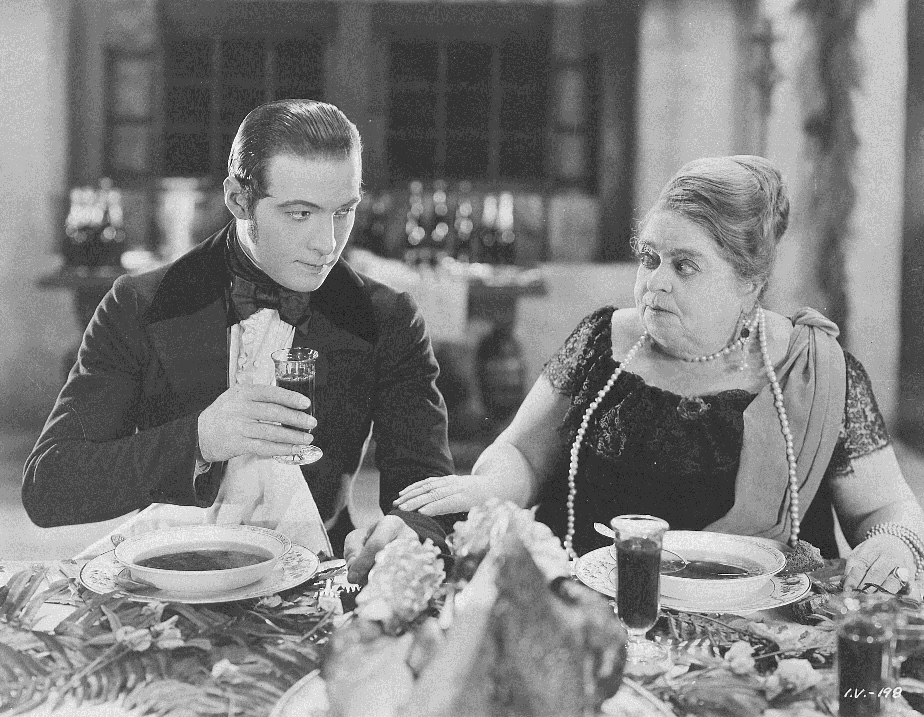
Dining and Cooking